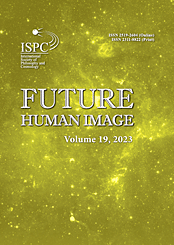NATO’s Nuclear Defense Strategy in the 21st Century and the Russia-Ukraine War
NATO’s Nuclear Defense Strategy in the 21st Century and the Russia-Ukraine War
Author(s): Giga GoguaSubject(s): Military history, Political history, Security and defense, Peace and Conflict Studies, Russian Aggression against Ukraine
Published by: Международное философско-космологическое общество
Keywords: Alliance Security; NATO’s Nuclear Policy; Nuclear Defense; Anti-missile Defense; RussiaUkraine Conflict;
Summary/Abstract: The North Atlantic Alliance is a military-political organization that was created from the beginning to ensure peace and security. The most important goal that drove NATO and still drives it is the protection of its member states from all types of threats. Fulfilling NATO’s mission of protecting its member states and ensuring peace and security in the North Atlantic region requires an appropriate strategy and capability to respond to the full range of contemporary challenges. There is a need to adapt NATO’s capabilities through development in a changing security environment so that the alliance is always ready to respond when needed. The most important element is nuclear and non-nuclear missile defense, which complement each other. The mentioned forces are supported by military or non-military means. The Russia-Ukraine war has brought renewed attention to the role of NATO and its nuclear defense capabilities in ensuring collective security in the Euro-Atlantic region. As tensions escalate and military confrontations intensify, examining NATO’s nuclear defense strategy and its potential implications for the ongoing conflict is crucial. This work aims to explore the significance of NATO’s nuclear defense in deterring aggression, maintaining regional stability, and shaping the dynamics of the Russia-Ukraine war. While the conflict poses various challenges and risks, NATO’s nuclear deterrent remains a crucial component of the alliance’s collective security architecture. The paper discusses NATO’s nuclear security policy in the current Russia-Ukraine context. As the situation continues to evolve, NATO needs to reassess its nuclear defense strategy and adapt to the evolving security environment in order to effectively address the complexities of the Russia-Ukraine conflict and promote lasting peace in the region.
Journal: Future Human Image
- Issue Year: 2023
- Issue No: 19
- Page Range: 26-33
- Page Count: 8
- Language: English

